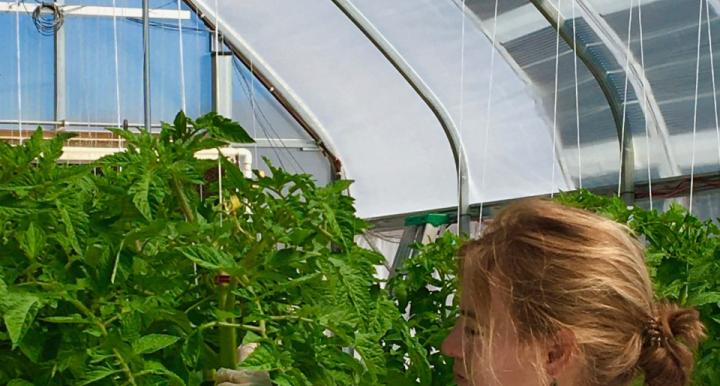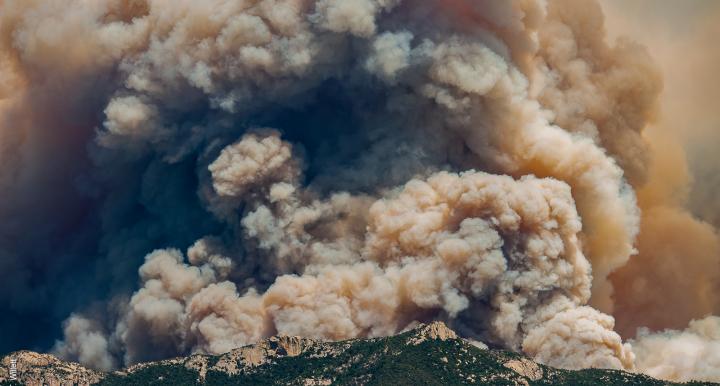Biodiversity, Conservation & Ecosystems
Environmental change continues to threaten organisms and their terrestrial, freshwater and marine ecological systems. Students work with Arizona Environment researchers to engage in innovative and interdisciplinary efforts that lead to the conservation of Earth’s biodiversity through collaborative and community-based solutions to the extinction crisis.
UArizona is actively involved in a wide range of basic and applied research and extension projects on biodiversity and conservation. We develop strategies to help mitigate the effects of climate extremes, ocean acidification, land use change, invasive species, wildfire and other pressures, helping to support, maintain and even create healthy and sustainable ecological systems. Our research focuses on ecosystem function, conservation biology and natural resource management, from local to continental scales, using cutting-edge geospatial technologies, observing systems, data management and modeling to develop new ways to protect valued places and resources and the ecosystem services that they provide.
Research Spotlights in Biodiversity, Conservation, & Ecosystems
Brian Enquist
Ecology and Evolutionary Biology
Enquist uses novel computation, big data, statistical, and visualization tools to assess how differing climate change scenarios will influence the distribution of diversity and functioning of forests and ecosystems.
Learn moreCristian Román-Palacios and John Wien
Ecology and Evolutionary Biology
Román-Palacios and Wiens are researching drivers of species extinction and survival as responses to climate change, along with the importance of maximum temperatures in extinction and niche shifts in survival.
Learn moreScott Saleska
Ecology and Evolutionary Biology
Saleska studies biogeochemical forest-atmosphere exchanges in the Amazonian rainforests of Brazil, including water loss and carbon uptake during photosynthesis, using both on-the-ground measurements and satellite imagery.
Learn moreJia Hu
School of Natural Resources and the Environment
Hu is researching the importance of fog and its contribution to streams and ground water in tropical montane cloud forests of the world. Has “cloud lifting” been occurring in recent decades?
Learn moreRachel Gallery
School of Natural Resources and the Environment
One of Gallery’s research projects is studying how plant and soil microbial responses to climate warming affect ecosystem carbon storage in the Colombian Andes.
Learn moreMelanie Culver
School of Natural Resources and the Environment
Culver is investigating the conservation genetics of predatory mammal species and non-invasive sampling techniques.
Learn more
The Haury Program supports an array of programming to further research, education, and partnerships for socially just solutions to environmental problems.
Read more
ASRC works on wide range of international, national, regional, and local projects in which advanced airborne and satellite remote sensing data and other geospatial information technologies are utilized to help address both fundamental and applied issues in natural resource management.
Read more
Biosphere 2 serves as a unique large-scale experimental apparatus housing seven model ecosystems with active research by teams of multidisciplinary scientists.
Read more
BBCS is a cross-campus initiative that addresses the interdisciplinary scientific and societal grand challenges associated with developing and implementing the emerging transitions needed to mitigate and adapt to climate change. It draws on campus strengths in conservation, human health biodiversity, and societal well-being.
Read more
The UA-led Santa Catalina Mountains and Jemez River Basin Critical Zone Observatory aims to improve understanding of the function, structure, and co-evolution of biota, soils, and landforms that comprise the critical zone by examining and measuring geomorphic, hydrologic, and biogeochemical interactions within it.
Read more
The Desert Laboratory on Tumamoc Hill is a culturally important 860-acre ecological preserve in Tucson, conducting environmental studies which include physiology, ecology, restoration ecology, and arid lands.
Read more
DSCESU is a UA-based cooperative network of federal, university, and non-governmental agencies studying and managing natural and cultural resources across California, Nevada, Arizona, New Mexico, and Texas, with emphasis on involving communities and under-represented groups.
Read more
The University of Arizona Museum of Natural History is comprised of five distinct collection and research units: herpetology, ornithology, ichthyology, mammalogy, and marine invertebrates.
Read more
The Santa Rita Experimental Range is a 52,000-acre range-- the longest continuously active rangeland research facility and among the 5 oldest biological field stations in the United States. It supports research on endangered species and ecosystems.
Read more
The SW CASC provides objective scientific information, tools, and techniques that land, water, wildlife, and cultural resource managers and other interested parties can apply to anticipate, monitor, and adapt to climate change impacts in the southwestern U.S.
Read more
ARIZ is a research collection of over 400,000 dried plant specimens, with emphasis on the plants of the Sonoran Desert region and adjacent areas of the southwestern United States and northwestern Mexico.
Read more
The V Bar V Ranch provides a unique combination of research and educational opportunities for sustainable rangeland management.
Read more
WISE offers programs for girls and women ranging from middle school students to professionals, including a conference for middle and high school girls, academic and career preparation programs for college students, mentoring, internships, scholarships, and much more.
Read more






